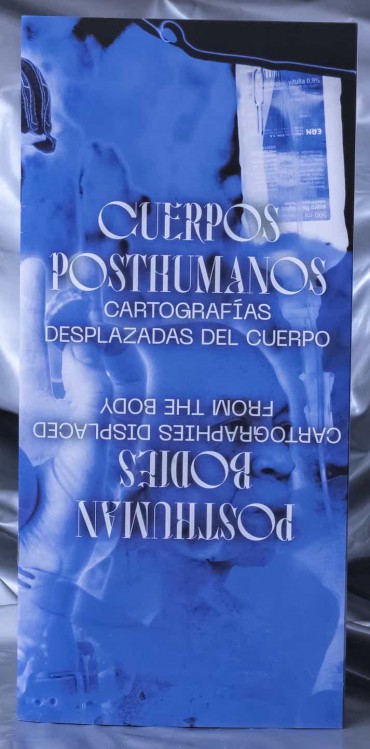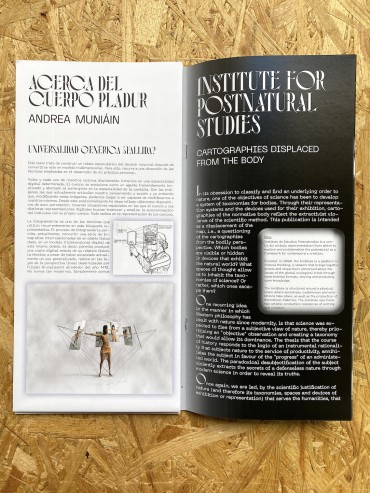
Atlas Menor #2
In its obsession to classify and find an underlying order to nature, one of the objectives of science has been to develop a system of taxonomies for bodies. Through their representation systems and the devices used for their exhibition, cartographies of the
normative body reflect the extractivist violence of the scientific method. This publication is intended as a displacement of the map, i.e., a questioning of the cartographies from the bodily perspective. Which bodies are visible or hidden in devices that exhibit the natural world? What spaces of thought allow us to inhabit the taxonomies of science? Or rather, which ones escape them?
Andrea Muniain brings us closer to her idea of the ‘plasterboard-body’ through photogrammetry, ‘a process that allows us to convert a series of interrelated photographs of a given physical object into a digital three-dimensional model of that same object’. Blanca Pujals also investigates how human manipulation, in her case in the transformation of the atmosphere and the territory that our bodies inhabit, happens involuntarily, politically and slowly. Quimera Rosa, with their performances and biohacking practices, propose an ‘intravenous’ body. The artists submit their bodies to a risky scientific-artistic experiment to ‘live’ the reaction of the human body when receiving chlorophyll in their blood. María Buey and María Molina dialogue around the concept of embodiment, to understand how the human mind incorporates a technological or ciborg annex to the gesturality of the body.





